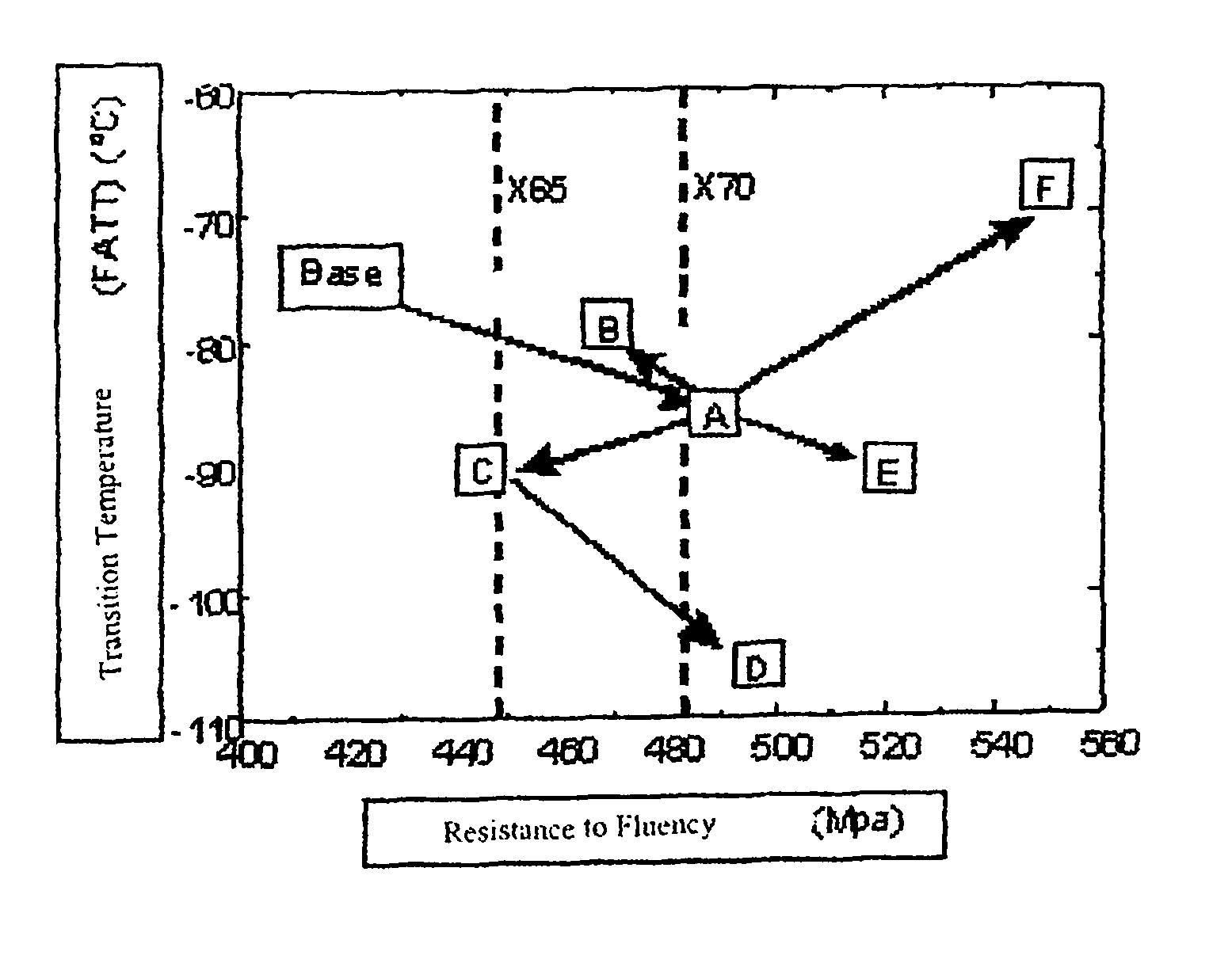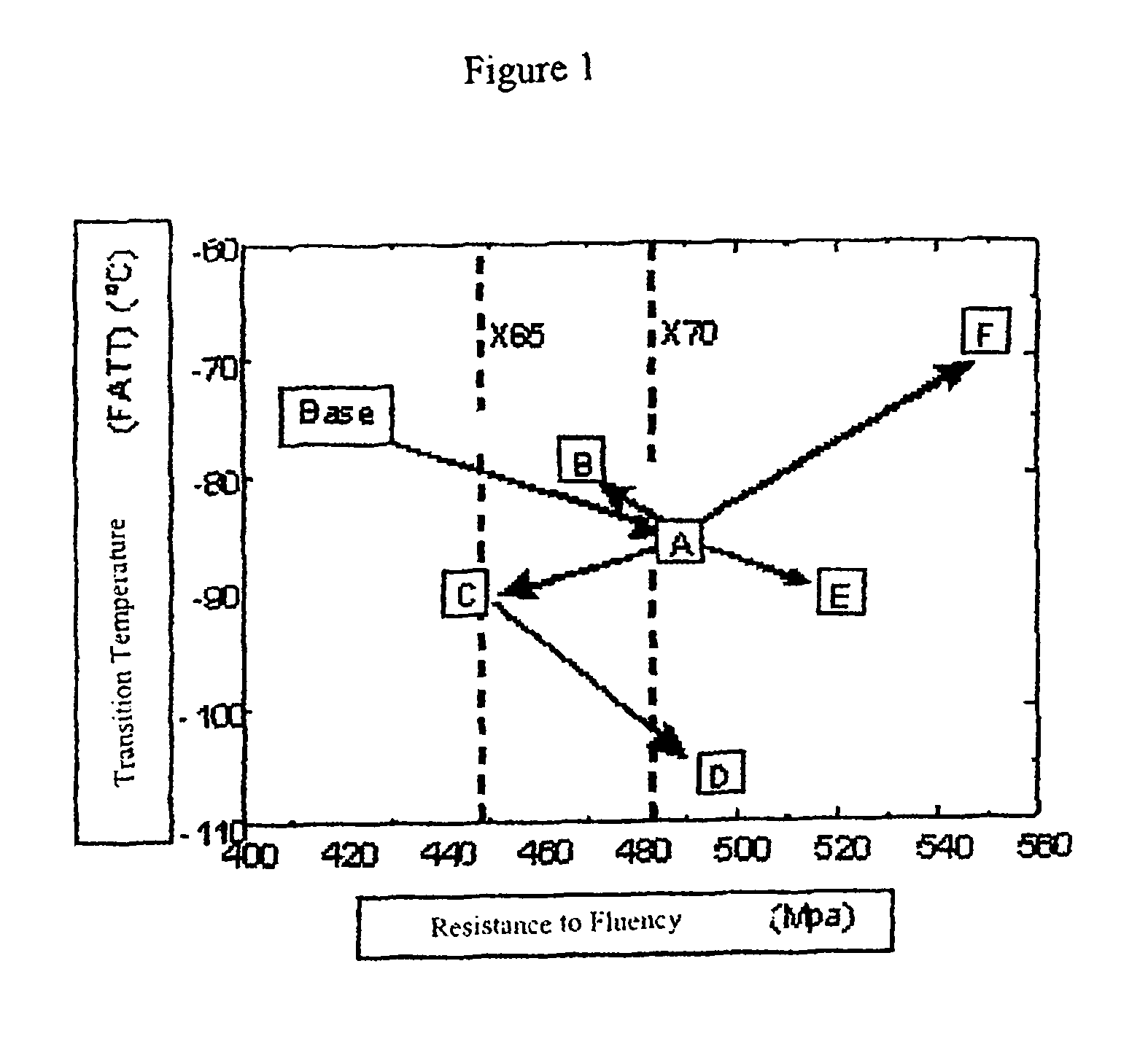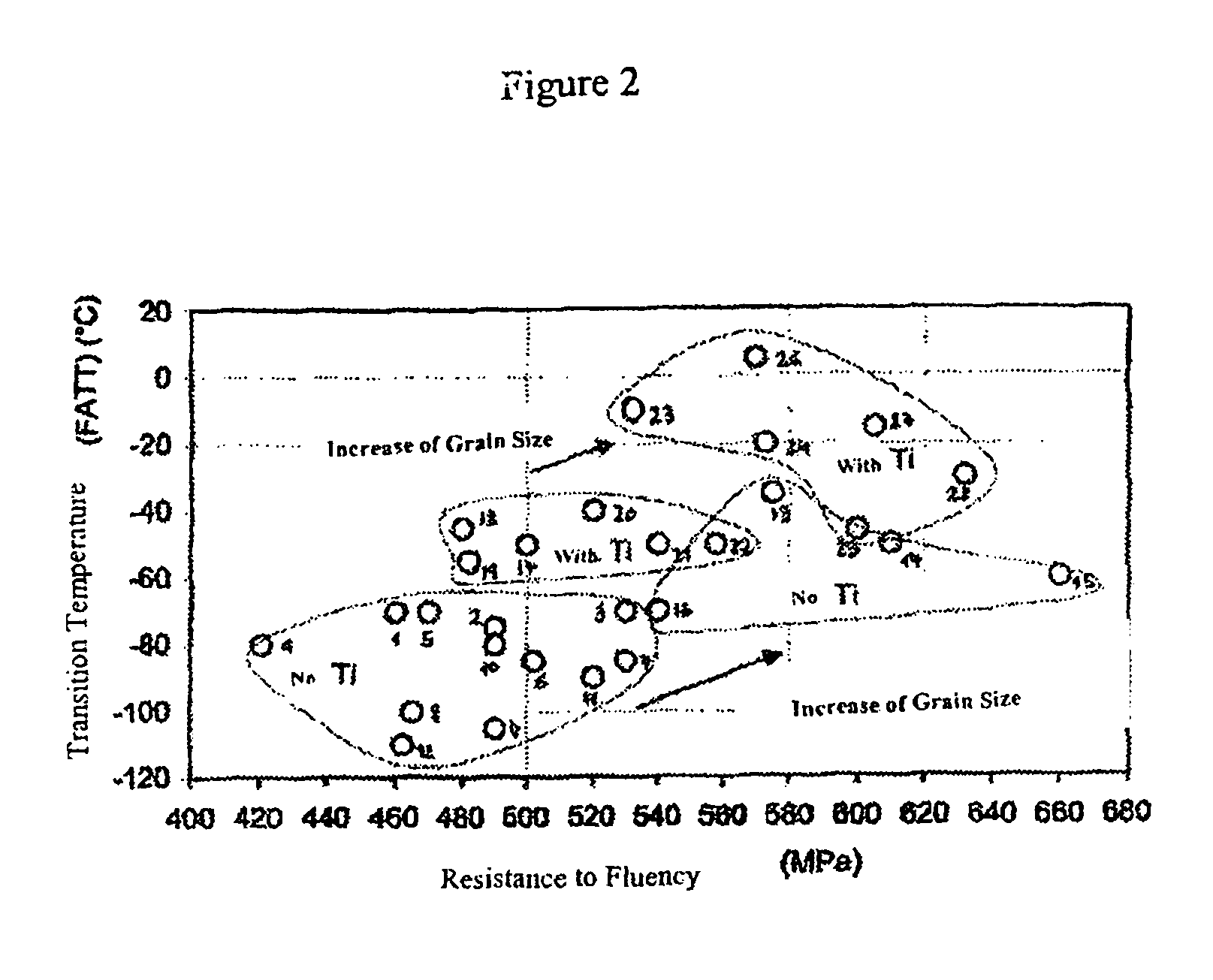Seamless steel tube which is intended to be used as a guide pipe and production method thereof
a technology of seamless steel and guide pipe, which is applied in the field of seamless steel tubing, can solve the problems of deteriorating the hardenability of the material, unable to meet the high resistance required, and requiring a large investment, so as to achieve high hardenability, high toughness, and high mechanical resistance.
- Summary
- Abstract
- Description
- Claims
- Application Information
AI Technical Summary
Benefits of technology
Problems solved by technology
Method used
Image
Examples
examples
[0131]Following are examples of the application of the present invention in table form.
[0132]Table 3 presents the different chemical compositions on which the tests used to consolidate this invention were based. Table 4 establishes the effect of this composition, with the heat treatments indicated, on the mechanical and anti-corrosion properties of the product. For example, the conduit identified with the number 1 has the chemical composition described in Table 3, that is: C, 0.09; Mn, 1.16; Si, 0.28; P. 0.01; S, 0.0012; Mo, 0.133; Cr, 0.20; V, 0.061; Nb, 0.025; Ni, 0.35; Al, 0.021; Ti, 0.013; N, 0.0051: Mo +Cr +Ni 0.68 and (Mo+Cr+V) / 5+(Ni+Cu) / 15=0.10.
[0133]At a given moment, this same material is subjected to a heat treatment as indicated in columns “T.Aust.” Y “T. Temp” in Table 4, that is, an authentic Temperature: T. Aust=900° C. and a Tempering Temperature: T. Temp.=650° C.
[0134]This same tube possesses the properties indicated in the following columns for the same steel number...
PUM
| Property | Measurement | Unit |
|---|---|---|
| temperature | aaaaa | aaaaa |
| temperature | aaaaa | aaaaa |
| temperature | aaaaa | aaaaa |
Abstract
Description
Claims
Application Information
 Login to View More
Login to View More - R&D
- Intellectual Property
- Life Sciences
- Materials
- Tech Scout
- Unparalleled Data Quality
- Higher Quality Content
- 60% Fewer Hallucinations
Browse by: Latest US Patents, China's latest patents, Technical Efficacy Thesaurus, Application Domain, Technology Topic, Popular Technical Reports.
© 2025 PatSnap. All rights reserved.Legal|Privacy policy|Modern Slavery Act Transparency Statement|Sitemap|About US| Contact US: help@patsnap.com



